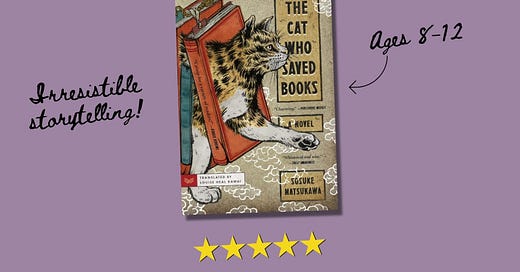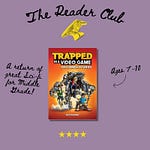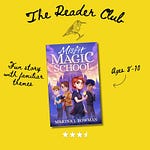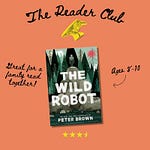Intro to Book
Hello Readers,
I assume you’re here because you, or someone you know, loves books. I am an avid book reader and a voracious book eater. Francis Bacon said, “Some books are to be tasted, others to be swallowed, and some few to be chewed and digested.” While I respect this quote, I rarely follow the wisdom behind it. I hardly ever simply taste a book. And most of the time I read so quickly my mannerisms of reading should be compared to the eating habits of a growing teenage boy. I inhale them. I am a book glutton. I love books. Repeating the same meal, or reading the same book over and over again only enhances it. If you love books like I do, or even slightly more or less, you’re sure to love this next one.
Today we will be looking at The Cat Who Saved Books by Sōsuke Natsukawa. If I butchered your name, Mr. Natsukawa, I apologize profusely, and for any repeated offenses throughout this podcast. Moving on. This story is about a teenager named Rintaro who just lost his grandfather and now is the owner of his old little bookshop in Japan. He is a bit of a recluse and seems to have no feelings but has to decide what to do with this bookshop.
Summary
Enter the cat. A tabby cat aptly named Tiger seemingly pops up out of nowhere and begins talking to Rintaro who has been holed up in the shop since his grandfather passed. He has forgone school and any sort of social interactions and the talking cat interrupts his musings. Not only is the cat talking, but he persuades Rintaro that together they must go and save books because Tiger needs help and only Rintaro can assist him. Rintaro, a lover of books, must choose to help the cat, or let the books go to the terrible consequences Tiger warns him about. It’s not an easy choice for a recluse.
This story has so many genres I don’t know where to start. There’s an obvious fantasy element and with it magical realism. But I’m also reminded of detective novels while reading it. To note, it is a Japanese book that was translated by Louise Heal Kawai. I feel the writing style of the Japanese novel also fits. It’s poetic and rhythmic. I can imagine this being made into a movie by Studio Ghibli and Miyazaki who brought us classic films like Spirited Away as it seems to fit the mold of their movies. All-in-all, I was elated reading the book and deeply resonated with a character who loved books as much if not more than I do.
The major characters are Rintaro and Tiger. There is also Sayo, a friend of Rintaro’s who is trying to help him be less of a recluse and return to school. While they are all interesting, the most interesting characters are those who are hurting the books. Natsukawa really dives deep into these characters and creates an impressive foray of villains.
Rintaro, as mentioned previously, is a recluse. There’s a Japanese word repeated in the book to describe him, but I won’t even attempt to say that one. Recluse is never actually used to describe him but it’s the broadest definition I can think to describe him. Though, it’s far more niche than that. More like a young man unwilling to be affected by society and detach himself from all things including his emotions. So…a typical American teenager, but with a purpose behind their detachment.
Then there’s Tiger. I’m a dog person by choice. However, I have a soft spot for kittens and gray cats. I can’t help myself. I’ve got to pet them. Don’t tell my dog I said that. But I’ve got to tell you, this tabby cat has won my heart over. Rogue with a heart of gold type character that is the heart and soul of this book. When you read it you’ll see that it was a cleverly disguised foreshadowing. But overall one of my favorite cat characters to ever exist.
Most of their adventures take place right in the bookshop. You heard that right. In the bookshop. I would even go so far as to say the setting is always in the bookshop. Though that is a bit misleading, I’m not going to revise it. I stand by it and hope I haven’t given too much away. They do go places and find these book villains so the settings change quite a bit but I still think I’ve got a case for the overall setting. You can read it and tell me what you think.
Analysis
This is the shortest book I’ve reviewed so far but I would love to make this biggest analysis of any review yet. If you were to ask my family what’s my favorite book, the likeliest answer you would receive is A Christmas Carol by Charles Dickens. I read it every year and could deep dive into the intricacies of the book at a level that would bore my listeners. I feel the same for this book. It is short but so intricately written that I could spend years reading it and never go as deep as it deserves. In telling others about this book I admittedly get too excited and begin telling them things that would for sure be considered spoilers. I am following a script so I do not do that here. It’s just that good.
Major Themes:
This is a young-adult fantasy novel. While it is usually easy for me to pinpoint a single major theme in a book, this one is difficult. It is about Rintaro and if I may be so bold, like A Christmas Carol, it is about the main character’s redemption. Writing this episode has made me realize that many elements of the story could be compared to A Christmas Carol. Maybe that’s why I enjoyed it so much. It is the redemption story of one lost soul who is detached from the world. Many of the other themes lay in each of the villains which would certainly give too much away to discuss here. There is also a bit of romance, but it is light and sweet.
Writing Style:
As for the writing style, as I said there is a Japanese style to it. I deeply appreciate the art of Japanese storytelling and writing in general. I’m sure there are dissertations out there discussing the art but I’m just going to say again it feels poetic and rhythmic. I don’t know how else to describe it. It is prose but carries itself with ebbs and flows that match poetic forms. I picture the scenes of the book and the unique voices of the characters as I read, but with this book, I could almost hear music as I read it. It does not help that I had just finished Art and Faith: A Theology of Making by Makoto Fujimura. Another Japanese author who talks about the beauty of the creative process. It put me in a space to feel the craft of Japanese writing. Because of this, and some of the themes by the villains, I would say this is for a 12-year-old or older. However, a caveat, I think it could be read to a younger audience and appreciated by even 8 and above. But some things will go over their heads.
Plot:
The plot is simple and easy to follow. I read this book in a single sitting one afternoon when I was off on the weekend. It Probably didn’t please my wife that I sat there for a couple of hours and read the book but I was hooked. It is not difficult to comprehend and again, an 8-year-old would appreciate the story. I mean, it’s a talking cat and he wants to save books. Okay, the 8-year-old may not appreciate the saving of books, unless they are a book lover. If that’s the case, that’s an awesome 8-year-old. I can’t remember even liking a book until I was nearly a teenager. Back on topic, Rintaro is likable and sympathetic, as in we can sympathize with him as readers. Tiger doesn’t always seem to have his best interest in mind but the results are pure magic. With the theme of redemption, the way Natsukawa drives the story is amazing.
Gospel Connections:
Wow. Already so much discussion up to this point and I still haven’t gotten to the Gospel connections. So, I am going to give a little warning, as much as I would like to refrain from spoiling too much, the impact of the gospel is best seen with the villains. I tried and can’t find a way around it. So there will be a little taste of parts of the book, but I’ll do my best not to ruin it and try to sum up the villains and their treachery on all things books without giving too much away.
So the villains all represent some part of human nature so to speak. Greed, ambition, pride, and the like. Rintaro must face these villains with wisdom and courage and speak out against their atrocities. It’s like David versus Goliath, or any story in the Bible where right meets wrong and calls it out. I’m thinking of a lot of prophets who died for what is right. Rintaro must face them and if he fails there will be dire consequences. Yet he goes. The biblical implications of standing for what’s right simply because they are right shines through. Sacrifice for others is seen. Challenging to grow and be steadfast in the face of adversity. This is a miniature Pilgrim’s Progress though without the actual Gospel in it. But there are a ton of spiritual elements but indirectly referenced. I’m also not sure if there isn’t a purposeful Christian theme underlying the book. There even seems to be a direct reference at one point, but that’s too much to discuss here. I can’t find anything about Natsukawa being a Christian but I think he certainly has had some brush with it after reading this book.
Social Impact:
As for social impact. This is a grieving boy. Unfortunately, this seems to be a theme in the books I’ve reviewed so far. I would love to read a utopian book where nothing bad ever happened, but I think the flavor would be somewhat sour at the end. Stories about real things impact our lives even if the story is made up. We can look at ancient stories and myths and how they helped shape people and societies. This book can impact those who are grieving to keep on going. This also addresses many human vices and points out how they are wrong. And how the impact of continuing to think those ways will only be negative in the end. These are great discussion points, especially with a teenager. Or teenager, to discuss the themes of this book with your parents.
Final Thoughts
If you haven’t guessed, or heard from the many times I said it, I loved this book. It is clean, light, funny, and magical. While there are some darker themes they aren’t scary or creepy. There is a kidnapping, but even then the threat though dire is not elevated to the level of a thriller. It is still calm and clean in those moments. Well worth the read for any audience age, I think this would most benefit a teenager or someone older who could grasp the deeper meanings. I would let my daughter who is 10 read this book without hesitation. And then would proceed to have a thorough discussion with her about what she thought about the book. I imagine it would be a fruitful conversation but maybe not as grandiose as I hope. But in an upcoming episode, we’ll see how an unscripted conversation with my kid actually turns out as we discuss one of her favorite book series. The Wingfeather Saga.
Note, I will have questions prepared beforehand but she won’t know them until I ask her while recording.
Until next time, have a good read.














Share this post